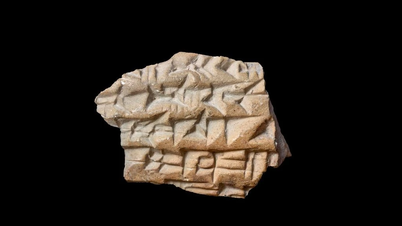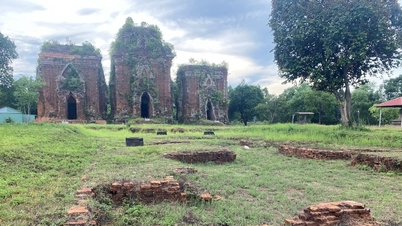Recently, Norwegian researchers during an excavation in the ancient Oslo harbor found a very rare iron glove, which could be part of a medieval knight's armor from the 14th century.
 |
| NIKU Institute archaeologists during an excavation looking for medieval artifacts. (Source: NIKU) |
Archaeologists from the Norwegian Institute for Cultural Heritage Research (NIKU) discovered the iron glove while metal detecting around the ancient Oslo harbor area.
In the Middle Ages, around 1050, Oslo was a port city. But in 1624, after a devastating fire, Norwegian King Christian IV ordered the port to be moved elsewhere.
Experts have carried out two major excavations in the old Oslo harbor area, the first in 2019-2020 and the second in 2022-2023.
According to NIKU archaeologist Håvard Hegdal, they discovered many objects from the Middle Ages and Renaissance, including shipwrecks, pottery, shoes, ropes, remains of butchered animals and a large number of weapons.
“This gauntlet was found about 40 meters from the shore, so it could have been thrown from a ship into the sea, although we cannot yet explain how this could have happened,” Hegdal told Live Science .
These metal gloves, used to protect the hands and wrists of warriors, were invented in the early 14th century, when European soldiers and knights upgraded their armor from chainmail to plate (consisting of several solid steel plates, heavier but more protective than chainmail).
Gloves of this type are rarely found, as iron and steel rust quickly and are easily destroyed when lying in the ground.
NIKU scientists also excavated a variety of weapons, mostly daggers, swords, spears and axes.
“Our hypothesis is that these were discarded due to a ban on weapons, based on similar regulations in other medieval cities,” said Mr. Hegdal. “Or they may have been discarded as a way to avoid customs inspection at the port.”
Understanding medieval Oslo in its entirety is complicated by the fact that many ancient Norwegian documents were destroyed by the great fire of 1728. According to expert Hegdal, NIKU's excavations, which are scheduled to end in November this year, could shed light on Oslo's medieval past.
Source: https://baoquocte.vn/na-uy-phat-hien-nhieu-hien-vat-quy-hiem-thoi-trung-co-283796.html



![[Photo] President Luong Cuong receives US Secretary of War Pete Hegseth](https://vphoto.vietnam.vn/thumb/1200x675/vietnam/resource/IMAGE/2025/11/02/1762089839868_ndo_br_1-jpg.webp)
![[Photo] Lam Dong: Images of damage after a suspected lake burst in Tuy Phong](https://vphoto.vietnam.vn/thumb/1200x675/vietnam/resource/IMAGE/2025/11/02/1762078736805_8e7f5424f473782d2162-5118-jpg.webp)











































































































Comment (0)